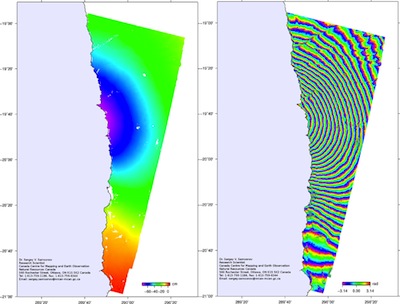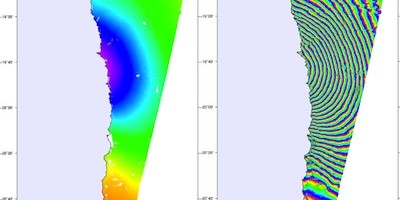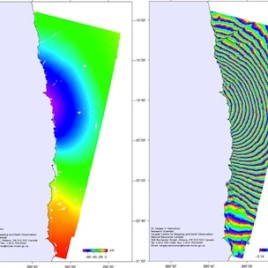
This satellite radar image shows the ground deformation and motion caused by the Mw 8.2 earthquake in Iquique, Chile on April 1, 2014. A new analysis of the data shows that while a big earthquake was expected for the area, this one wasn’t it. (Credit: Sergey Samsonov, Natural Resources Canada)
Scientists had long expected a major earthquake in the subduction zone adjacent to northern Chile, but the magnitude 8.2 earthquake that occurred on April 1, 2014 was not it, according to a new study.
Stress along the fault had been building since the last major quake in the area occurred in 1877. However, an analysis of the seismic data from the earthquake that damaged Iquique, Chile earlier this year shows that only part of the stress has been relieved.
The authors expect future large quakes to the south and potentially to the north of the Iquique sequence.
Original research paper published in the journal Nature on August 13, 2014.
Names and affiliations of selected authors

